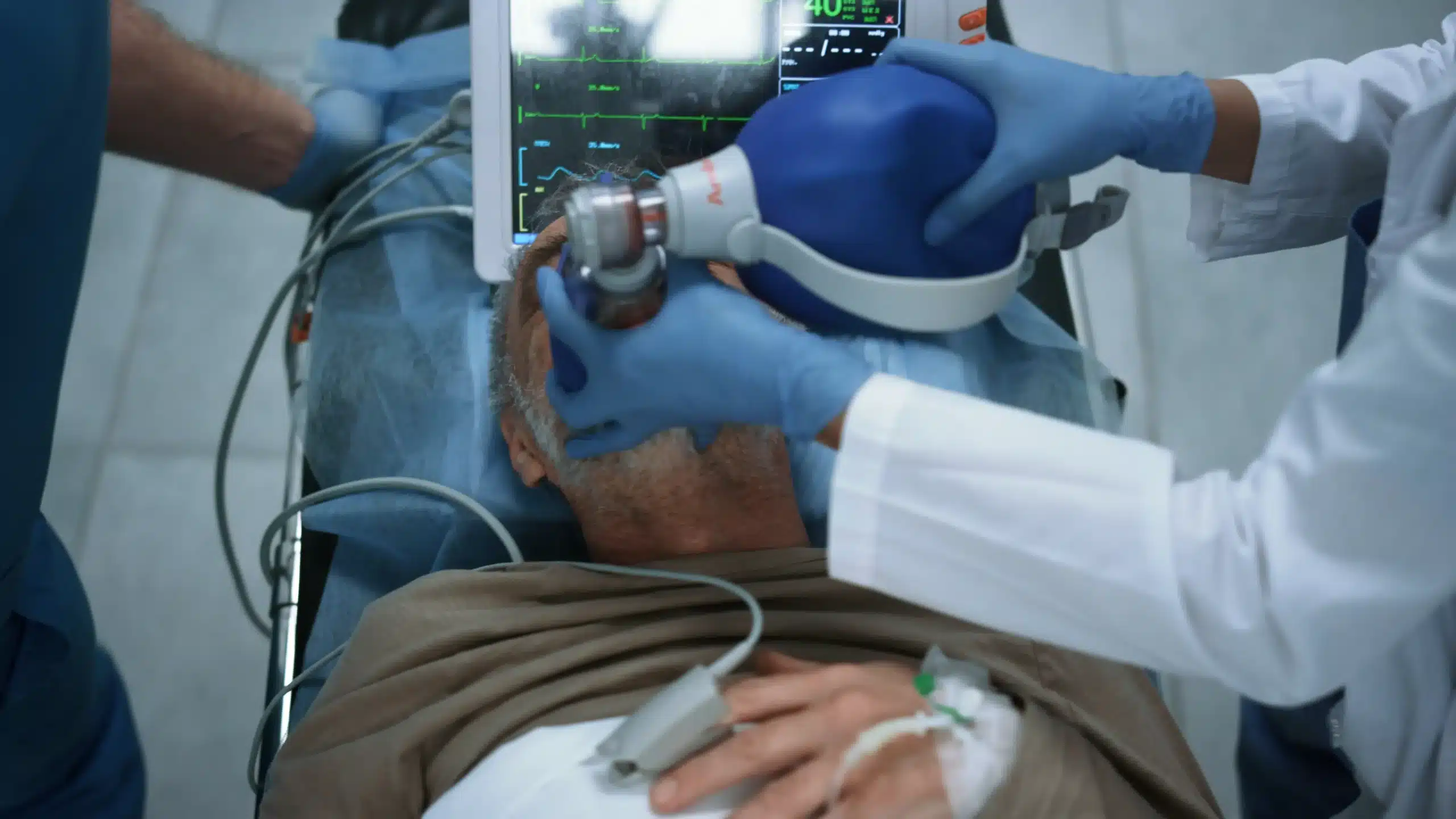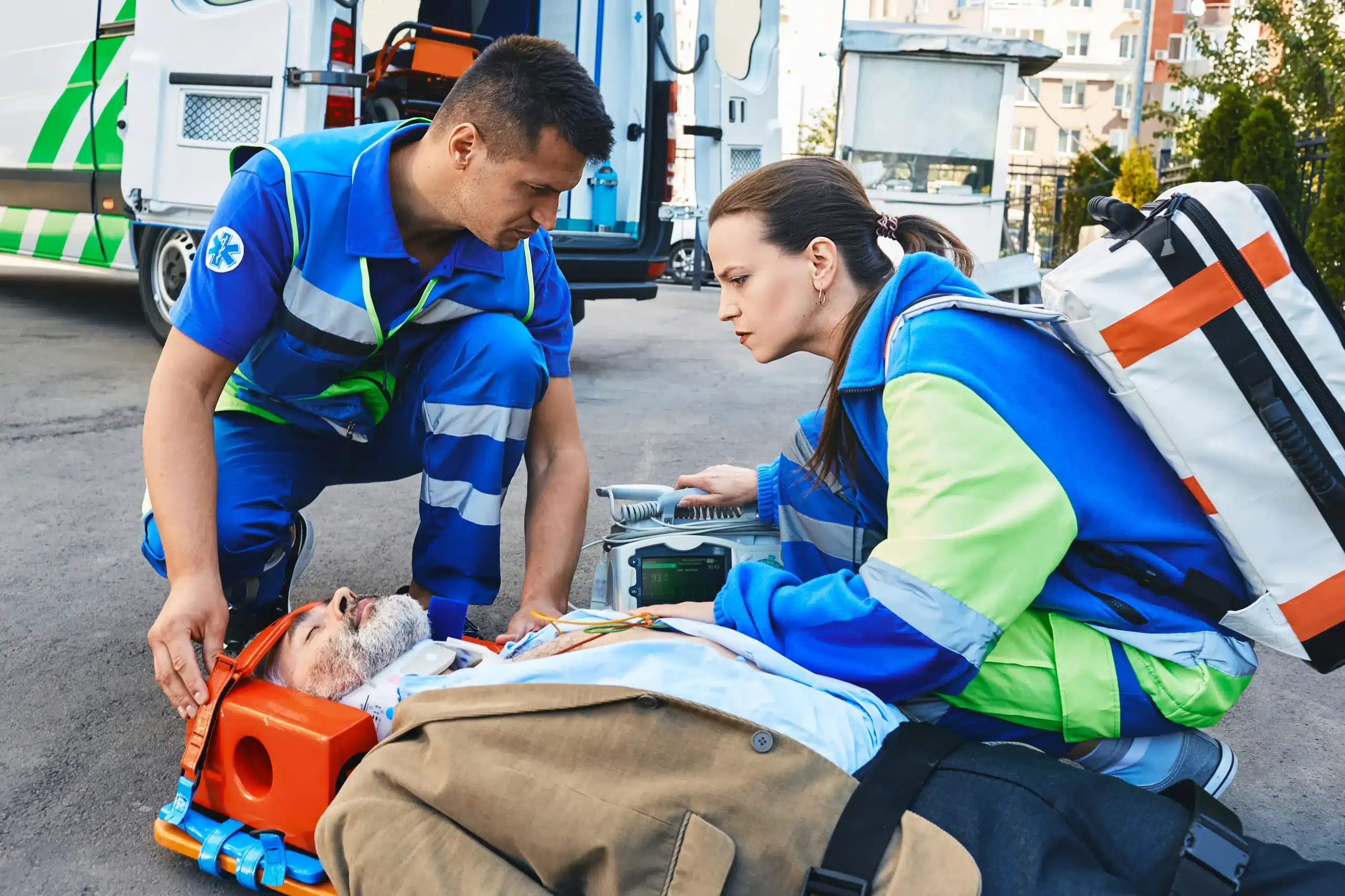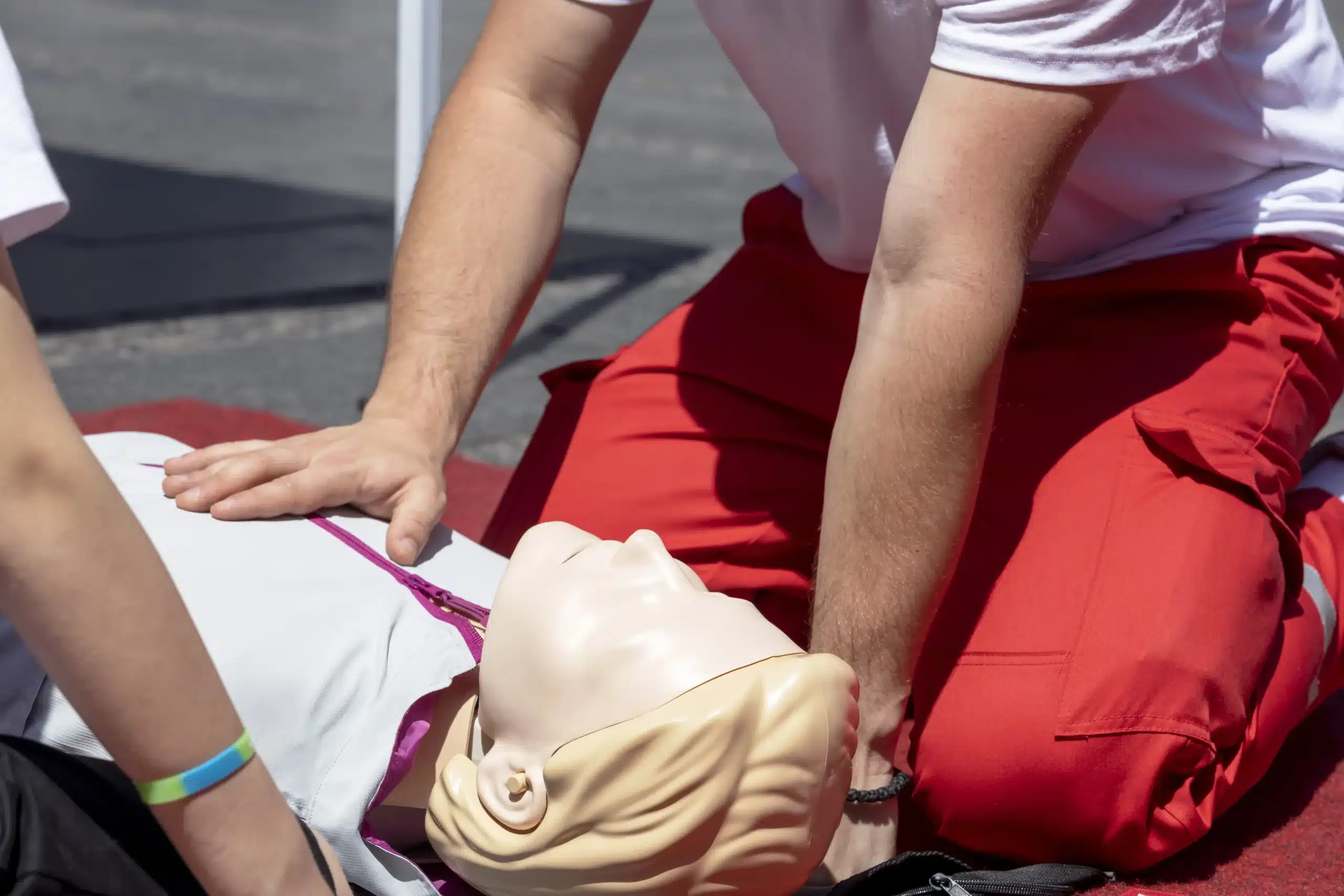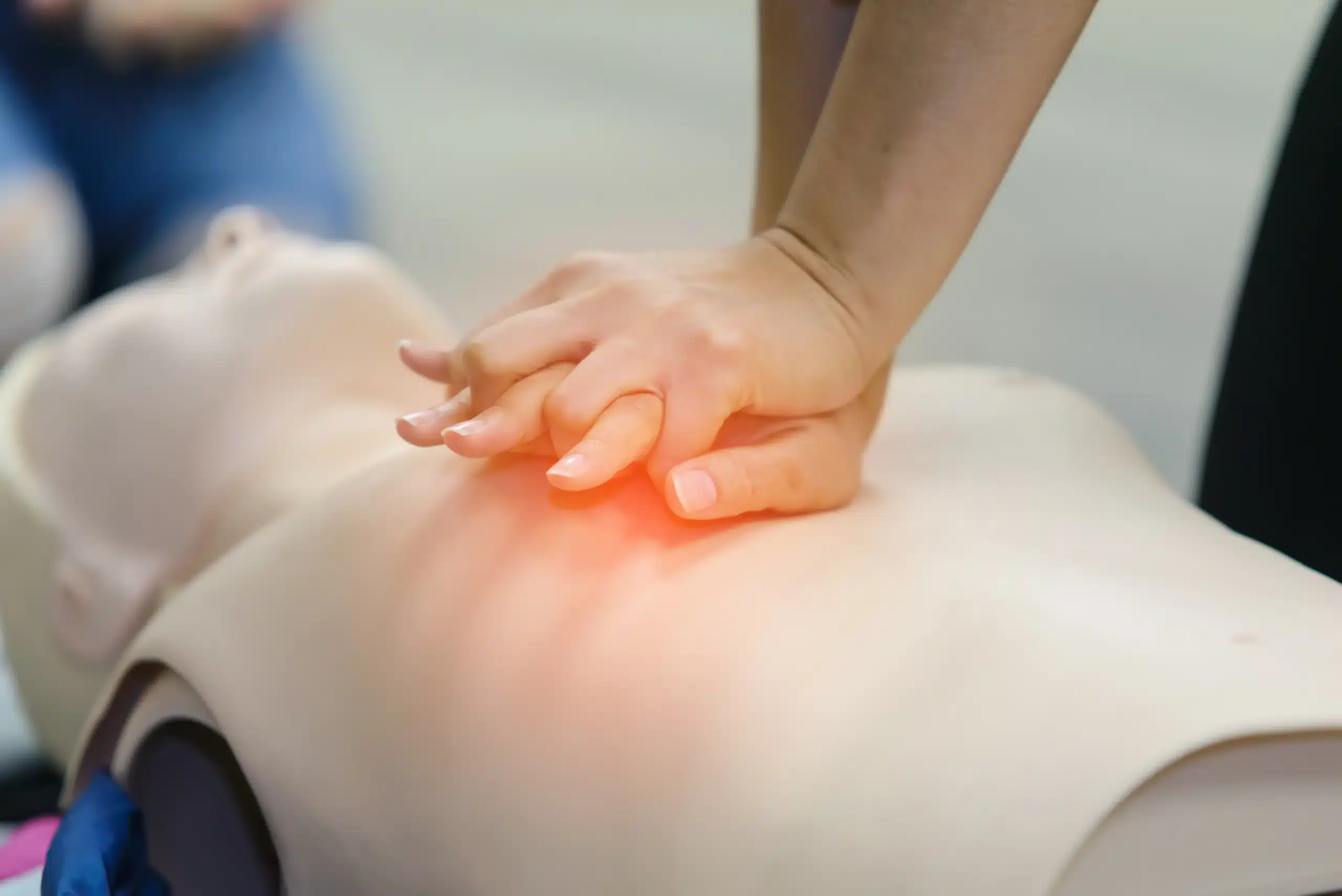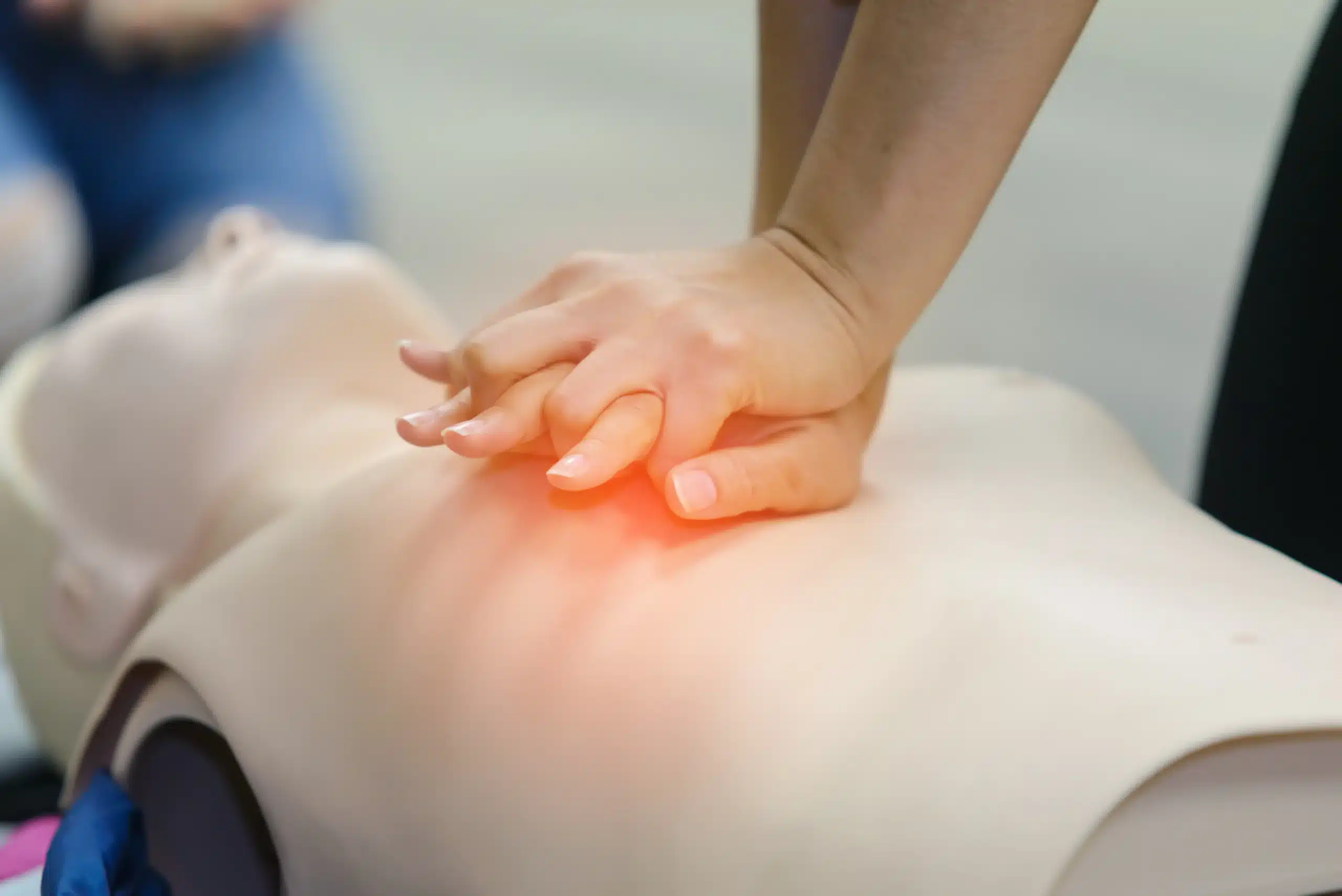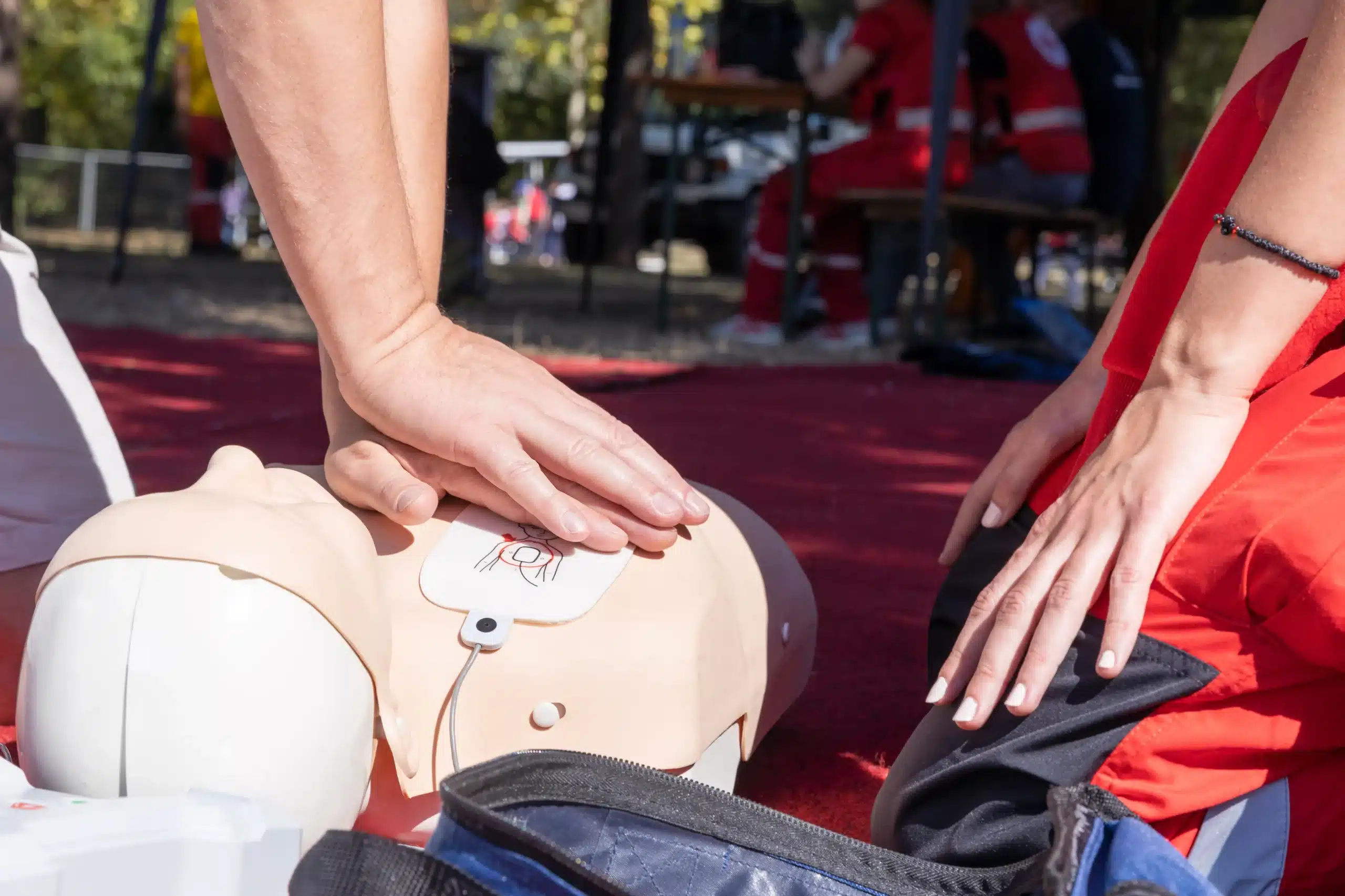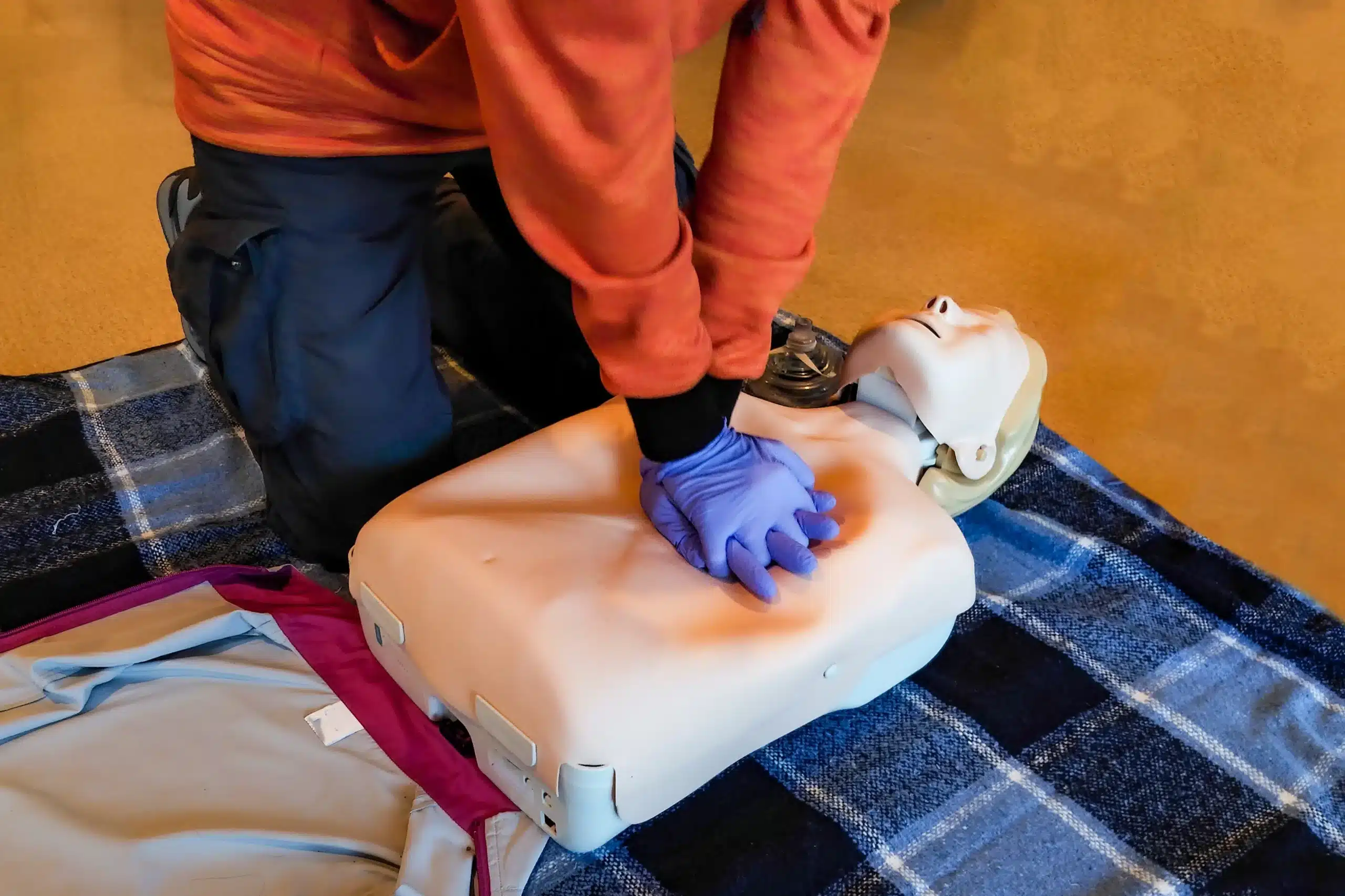Ready to become a certified lifesaver? Maybe you’re drawn to a career in healthcare, want to be prepared for any emergency, or need to renew your current certification. This comprehensive guide breaks down everything you need to know about Basic Life Support (BLS) certification, from understanding the core skills to finding “bls courses near me” and choosing the right training program. We’ll cover key skills, course formats, costs, and how to prepare, so you can confidently take the next step toward becoming a certified lifesaver. Whether you’re in Palo Alto, Redwood City, or Menlo Park, this guide will help you find the perfect BLS course to fit your needs and empower you to make a difference.
Key Takeaways
- BLS certification empowers you to save lives: It equips you with essential skills like CPR, AED use, and choking relief, valuable for healthcare professionals and anyone who wants to be prepared for emergencies.
- Finding the right BLS course is easy: Explore various options, including online, in-person, and blended learning formats. Consider factors like AHA-certification, instructor experience, and course materials when making your decision.
- Preparing for your BLS course sets you up for success: Familiarize yourself with the curriculum, gather any necessary materials, and choose a learning environment that maximizes your comprehension and skill development.
What is BLS?
Definition and Importance
Basic Life Support (BLS) certification is a vital credential for healthcare professionals and anyone who wants to be prepared for emergencies. It equips you with the skills to respond effectively to life-threatening situations, potentially saving lives. BLS isn’t just for doctors and nurses; it’s valuable for teachers, coaches, parents, and anyone who wants to be confident helping in a crisis. BLS training covers essential techniques like CPR, using an automated external defibrillator (AED), and relieving choking. These skills are critical in various emergencies, from heart attacks and strokes to near-drowning incidents. If you’re considering a career in healthcare, BLS certification is often a prerequisite. Even if it’s not required for your job, having these skills can make you a more valuable employee and a confident first responder in your community. Learn more about our BLS certification courses.
Key Skills You’ll Learn
A BLS course provides comprehensive training that goes beyond just CPR. You’ll learn how to quickly assess a situation and perform a visual survey to identify immediate threats. The course covers CPR and AED use for adults, children, and infants, ensuring you’re prepared for any age group. You’ll also learn how to handle obstructed airways, a skill that can be life-saving in choking emergencies. Additionally, many BLS courses now include training on how to respond to opioid overdoses. These skills empower you to provide immediate assistance while waiting for professional medical help to arrive. For those interested in more advanced training, we also offer ACLS courses that build upon the foundational skills learned in BLS.
Find BLS Courses Near You
Finding the right BLS course requires a bit of research, but it’s well worth the effort. Here’s how to find BLS courses near you:
Search Online Effectively
Start your search online. Use specific keywords like “BLS certification near me” or “American Heart Association BLS classes” to narrow your results. Look at class schedules, costs, and the overall reputation of the provider. Reading online reviews can give you a sense of other students’ experiences. Consider factors like location, schedule, and cost to find a course that fits your needs. Our BLS Certification in Palo Alto guide offers helpful tips for choosing the right course.
Check Local Healthcare Institutions
Hospitals and clinics often offer BLS certification courses for their staff and sometimes open these courses to the community. Check with local healthcare providers to see what they offer. Many ensure their training meets industry standards, making it a reliable option. EmedCert’s FAQ page offers additional information on BLS training.
Explore Community Centers and Fire Departments
Community centers and local fire departments are also great resources for BLS training. They often offer CPR and BLS classes, making these essential skills accessible to everyone. Check their websites or give them a call to find upcoming courses. You can find more information on local BLS training in our Concord BLS guide.
Consider Top BLS Certification Providers
Several well-known organizations provide high-quality BLS certification. Here are a few to consider:
American Heart Association
The American Heart Association (AHA) is a leading provider of BLS certification courses. They offer training for healthcare professionals, first responders, and the general public. All courses are taught by certified AHA instructors.
American Red Cross
The American Red Cross also provides BLS certification and renewal courses. Their programs are primarily designed for healthcare providers and first responders.
National Safety Council
The National Safety Council offers various safety training courses, including BLS, tailored to different audiences. You can explore their website to find a course that aligns with your specific needs.
Local Hospitals and Health Systems
As mentioned earlier, local hospitals are a valuable resource for BLS training. They often provide courses for their staff and may extend these to the community. Reach out to hospitals in your area to inquire about availability. CPRCare’s blog post on BLS certification costs offers additional insights.
Community Colleges
Many community colleges offer BLS certification courses, often as part of their health sciences programs. This can be a convenient and affordable option for students and community members. Our Sacramento BLS guide provides more information on BLS class options.
Palo Alto CPR Classes
Palo Alto CPR Classes offers comprehensive BLS certification courses covering essential lifesaving skills, including high-quality CPR, AED use, and choking relief. We’re committed to providing convenient and affordable training. We offer a low price guarantee and discounts for group classes. We also offer the RQI program for convenient skills sessions. Check out our RQI classes to learn more.
Explore BLS Course Formats
When it comes to BLS certification, you have several learning options. Understanding the pros and cons of each format can help you choose the best fit for your schedule and learning style. Let’s take a look at in-person, online, and hybrid learning.
In-Person Classes
In-person BLS classes offer a hands-on learning experience. You’ll work directly with an instructor, receive immediate feedback, and practice skills in real time. This direct interaction is invaluable for mastering essential techniques like CPR and using an AED. If you thrive in a traditional classroom setting and appreciate face-to-face instruction, in-person training might be a great option. For example, Safety Training Seminars offers American Heart Association BLS classes in Palo Alto.
Online Courses
Online BLS courses provide a flexible alternative to traditional classroom learning. Studying at your own pace and revisiting materials as needed can be a huge advantage, especially for busy professionals. Online courses often incorporate videos, interactive exercises, and simulations to reinforce learning. This format offers convenience and accessibility, allowing you to complete the coursework from anywhere with an internet connection. If you prefer self-directed learning and need a flexible schedule, an online BLS course might be the perfect fit.
Hybrid Learning
Hybrid learning combines the benefits of online and in-person instruction. You’ll typically complete the cognitive portion of the course online, covering the theoretical knowledge and principles of BLS. Then, you’ll attend a shorter in-person session focused on hands-on skills practice and testing. This blended approach offers the flexibility of online learning with the practical application of in-person training. The BLS HeartCode course is a popular example of this format. This approach can also be more cost-effective, making it an attractive option for many.
Choose the Right BLS Course Provider
Picking the right BLS course provider is key to getting high-quality training. Here’s what to consider:
Accreditation and Certification
First things first, make sure your provider offers American Heart Association (AHA) certified courses. The AHA sets the standard for CPR and BLS training, so their certification is widely recognized and respected. Look for providers who clearly state their AHA accreditation—it shows they’re committed to quality. At Palo Alto CPR Classes, we’re proud to offer AHA-certified courses through the RQI program, ensuring your certification meets the highest standards.
Instructor Experience and Qualifications
The instructor’s expertise makes a big difference in your learning. Check that your course is led by certified instructors with plenty of experience. Experienced instructors can explain concepts clearly, answer your questions effectively, and share real-world examples. This ensures you learn the most current, effective lifesaving techniques.
Course Materials and Resources
A good BLS course should offer a mix of learning methods. A blend of online learning and in-person skills sessions is often the best approach. For example, the BLS CPR Provider Heartcode course combines online modules with hands-on skills testing, giving you flexibility and practical experience. This blended format lets you learn at your own pace online and then practice your skills in person. Also, check if the course includes other resources, like practice tests or refresher materials.
Student Reviews and Ratings
Before signing up, see what other students say. Online reviews and ratings can give you a feel for the course quality, the instructor’s effectiveness, and the overall experience. Many students appreciate the flexibility of online or hybrid courses. Positive reviews often mention engaging instructors, comprehensive materials, and a supportive learning environment. Take the time to research and choose a provider with a solid reputation. If you’re in the Palo Alto area, check out our low price guarantee and ask about our group discounts if you’re registering with a group.
Understand BLS Course Costs
Knowing the price range for BLS courses helps you budget effectively and find a course that fits your needs. Let’s break down the factors influencing BLS course costs and explore ways to save.
Average Price Range
BLS course fees typically range from $65 to $120, depending on several factors. For instance, our BLS CPR Provider Heartcode course, which blends online learning with in-person skills testing, is priced at $120. This price reflects the comprehensive training and the blended learning format. Remember that prices can change, so it’s always best to check directly with the training provider for the most up-to-date pricing. We offer a low price guarantee at Palo Alto CPR Classes to ensure you’re getting excellent value.
Factors Affecting Cost
Several factors influence the final cost of your BLS course. The course format—in-person, online, or hybrid—plays a significant role. In-person courses often include hands-on practice with certified instructors, which can impact pricing. Online courses may offer more flexibility and sometimes come at a lower price point. Blended learning, like our Heartcode BLS course, combines the benefits of both formats. Other factors include the course provider, location, and any included materials. Choosing the right BLS course involves considering your learning style, budget, and the specific requirements of your profession. Take the time to research and compare options to find the best fit for your needs.
Discounts and Financial Aid
While financial aid for BLS courses isn’t typically available, many providers offer discounts, especially for group registrations. Check with your employer or professional organization, as they may have partnerships with training centers or offer subsidies for continuing education. Even if you’re getting certified for the first time, remember that BLS certification provides continuing education credits, which can be valuable for career advancement. Completing a BLS course often grants four continuing education credits. You can find more information on our BLS certification page.
Group Rates and Promotions
If you’re training with colleagues or friends, explore group discounts. Many providers offer reduced rates for group bookings, making it a cost-effective option for workplaces or community groups. Keep an eye out for promotions and seasonal offers, which can further lower the cost. For example, some providers bundle CPR and First Aid training for around $85, while others offer BLS certification for about $95, with recertification around $65. We offer discount group rates at Palo Alto CPR Classes, so reach out to us if you’re interested in training a group. Comparing prices and exploring different providers will help you find the most affordable option without compromising on quality training.
Plan Your BLS Course Schedule
Once you’ve found potential BLS courses, it’s time to create a schedule that works for you. Here’s what to consider:
Typical Course Length
BLS courses are designed to be comprehensive but efficient. Most BLS certification courses begin with a brief introduction to basic life support techniques, preparing you for the training ahead. The total time commitment varies based on the course format (in-person, blended learning, or online) and the provider, but you can generally expect a course to last between four and six hours.
Flexible Scheduling
One of the best aspects of BLS training is the flexible scheduling. You can often find classes on evenings, weekends, and weekdays to accommodate busy schedules. This flexibility is especially helpful for working professionals and students. Many providers, like Palo Alto CPR Classes, offer a combined CPR/First Aid course for around $85, while BLS certification typically costs around $95 for initial training and $65 for recertification. The increasing availability of online BLS certification courses has also made it easier to fit training into your life.
Certification Validity and Renewal
Your BLS certification is typically valid for two years. Mark your calendar so you know when it’s time to recertify. Renewal is straightforward—simply complete a BLS recertification course to maintain your credentials and stay up-to-date on the latest guidelines. Staying current with your certification ensures you’re always prepared to provide effective care in an emergency.
Know What to Expect in a BLS Course
So, you’re ready to take a BLS course—great! Knowing what to expect can help you feel prepared and confident. Here’s a rundown of what a typical BLS course covers:
Curriculum Overview
BLS courses cover the essential skills needed to respond to life-threatening emergencies. You’ll learn adult, child, and infant CPR techniques, how to use an automated external defibrillator (AED), and how to help someone who is choking. These courses are designed for healthcare providers and other professionals who need these skills. The curriculum follows guidelines established by organizations like the American Heart Association, emphasizing a systematic approach to resuscitation, including high-quality chest compressions, airway management, and effective ventilation. Our courses cover all these essential elements.
Hands-On Practice
BLS courses blend online learning with hands-on practice. Expect to participate in realistic, scenario-based training to build your critical thinking and communication skills. This approach helps you apply your knowledge in simulated emergencies, so you’ll feel more prepared to handle real-life situations. Many courses offer the flexibility to complete the theoretical part online before attending an in-person skills session. This blended learning approach allows you to learn at your own pace and get personalized feedback from certified instructors. At Safety Training Seminars, we offer RQI courses that combine online learning with low-ratio, in-person skills sessions. This format ensures you get plenty of practice time.
Assessment and Certification
To earn your BLS certification, you’ll need to complete both a written exam and a skills test. The written exam tests your knowledge of BLS principles and procedures. The skills test evaluates your ability to perform CPR and other life-saving techniques correctly. After successfully completing both, you’ll receive your BLS certification, typically valid for two years. Renewal courses are available when your certification is close to expiring, allowing you to stay up-to-date on the latest guidelines and refresh your skills. Check out our low price guarantee for the best rates on BLS certification and recertification courses. We offer convenient options for both initial certification and renewal.
Prepare for Your BLS Course
Getting ready for your BLS course can make a real difference in how much you get out of it. A little prep work goes a long way! Here’s how to get prepared:
Pre-Course Study Materials
Many organizations, like the Red Cross, offer study materials like handbooks and online guides. Reviewing these beforehand can give you a head start and boost your confidence. Knowing the basics allows you to focus on mastering the skills during the training itself. The Red Cross also ensures its curriculum reflects the latest scientific best practices, so you’re learning the most current techniques.
Required Equipment
Typically, your BLS course will provide all the necessary equipment. This often includes CPR manikins, AED training devices, and other resources for demonstrations and practice. You’ll learn how to use an AED, practice CPR compressions, and learn how to help someone who is choking. If you’re taking a blended learning course like the Heartcode BLS course, you’ll complete the online portion first, which usually takes about one to two hours.
Mental and Physical Readiness
It’s normal to feel a little apprehensive before starting a BLS course. If you have any questions, reach out to the course provider—they’re there to help! Also, consider what learning style works best for you. Some people thrive in a traditional classroom, while others prefer online or blended learning. Choose the format that helps you learn and retain information most effectively. If you prefer in-person learning, that’s perfectly fine. Research shows many students feel they learn better face-to-face.
Benefit from BLS Certification
Getting your BLS certification is more than just checking a box; it’s an investment in yourself, your career, and the well-being of those around you. Whether you’re a healthcare professional, a caregiver, or simply someone who wants to be prepared, BLS certification offers tangible benefits.
Career Advancement
BLS certification is often a prerequisite for many healthcare roles. It’s a crucial credential, though sometimes misunderstood. Earning your BLS certification demonstrates a commitment to patient safety and high-quality care, making you a more competitive candidate for jobs and promotions. This certification on your resume shows potential employers you’re prepared to handle emergencies and provide immediate care, giving you a distinct advantage. It can open doors to new opportunities and help you advance in your field. Even if it’s not strictly required for your current position, having a BLS certification signals your dedication to professional development and enhances your career prospects.
Confidence in Emergencies
Knowing you can effectively respond in a crisis provides invaluable peace of mind. BLS training equips you with the skills to manage a range of emergencies, from cardiac arrest to choking. You’ll learn how to perform CPR, use an AED, and provide basic airway management. This knowledge translates into confidence, allowing you to react calmly and efficiently under pressure. Whether you’re at work, at home, or out in the community, you’ll be prepared to assist those in need and potentially save lives. This confidence extends beyond the technical skills; it empowers you to take charge in a crisis and provide support until professional help arrives.
Job Requirement Compliance
For many healthcare professionals, maintaining a current BLS certification is a non-negotiable job requirement. Renewal is typically required every two years, ensuring your skills and knowledge remain up-to-date. BLS courses often offer continuing education credits, which can be essential for maintaining professional licenses and certifications. By staying current with your BLS certification, you demonstrate your commitment to meeting industry standards and providing the highest level of care. This fulfills job requirements and contributes to a safer and more competent work environment. Staying compliant also protects you from potential liability and ensures you’re always prepared to respond effectively in an emergency.
Address Common BLS Course Concerns
It’s normal to have questions before signing up for a BLS course. Let’s address some common ones to help you feel confident in your decision.
Time Commitment and Flexibility
One of the biggest concerns for busy professionals is the time commitment involved in BLS training. Many courses are designed to be concise and efficient. You can find BLS courses that fit your schedule, with options for weekend classes, evening sessions, and accelerated formats. Some providers, like Palo Alto CPR Classes, offer daily classes in multiple locations, giving you more flexibility. Remember, BLS certification is a valuable investment in your career and the safety of those around you. It’s crucial for patient safety, so finding a course that works for your schedule is essential.
Online vs. In-Person Learning
Choosing between online and in-person BLS training depends on your learning style. Online courses offer convenience and self-paced learning, allowing you to study anytime, anywhere. However, in-person classes provide hands-on practice and direct interaction with instructors and peers. This can be beneficial for mastering essential skills. Hybrid learning models combine the benefits of both formats, offering online coursework supplemented by in-person skills sessions. Consider what works best for your learning style and the level of interaction you prefer. For more insights into online vs. in-person learning, check out this research study.
Certification Recognition and Validity
It’s crucial to ensure the BLS certification you earn is widely recognized. Look for courses that are accredited by reputable organizations like the American Heart Association or the American Red Cross. These certifications are generally accepted nationwide and meet workplace requirements. If you have questions about whether a specific online certification is accepted, it’s always best to check directly with your employer or licensing board. Many online BLS certifications offer continuing education credits, which can be valuable for maintaining professional licenses. When researching BLS courses, consider factors like program accreditation, instructor experience, and course format to find the best fit. This guide for BLS classes offers helpful tips. Choosing a reputable provider ensures your certification is valid and respected.
Related Articles
- BLS Certification in Palo Alto: A Comprehensive Guide
- BLS Recertification Near Me: Your Complete Guide – Palo Alto CPR Classes
- BLS Certification Near Me: Find Local Classes – Palo Alto CPR Classes
- BLS Classes in Palo Alto: Your Complete Guide – Palo Alto CPR Classes
- Find BLS Training Near Me: A Complete Guide – Palo Alto CPR Classes
Frequently Asked Questions
How long does a BLS certification last? BLS certification is typically valid for two years. After that, you’ll need to take a recertification course to keep your skills current and maintain your credential.
What’s the difference between online and in-person BLS courses? Online BLS courses offer flexibility, allowing you to learn at your own pace and on your own schedule. In-person classes provide a more hands-on experience with direct instructor feedback and interaction with other students. Hybrid courses combine online learning with in-person skills sessions.
What does BLS certification cover? BLS certification covers core life-saving skills, including CPR for adults, children, and infants, how to use an AED, and what to do if someone is choking. It also often includes training on recognizing and responding to opioid overdoses.
Why is BLS certification important? BLS certification is essential for many healthcare professionals and a valuable asset for anyone who wants to be prepared for emergencies. It equips you with the skills to potentially save a life and respond effectively in critical situations.
How much does a BLS course cost? The cost of a BLS course can vary depending on the provider, location, and course format. It typically ranges from $65 to $120. Many providers offer discounts for groups, so be sure to ask about those options.
